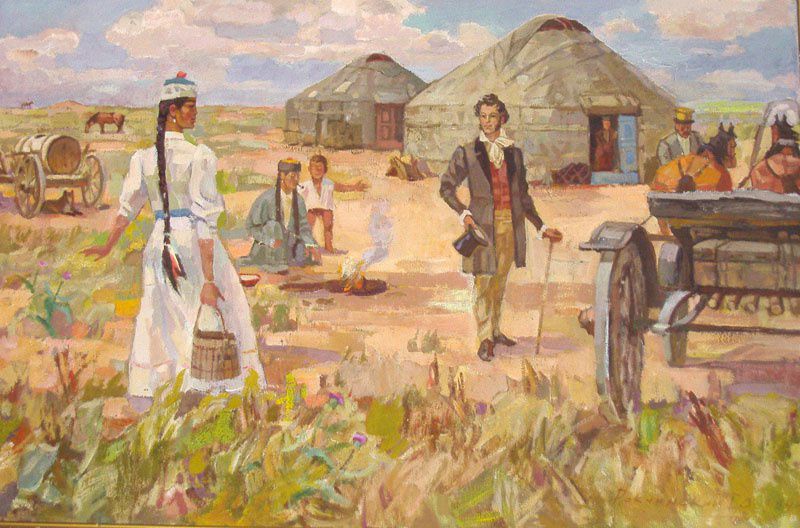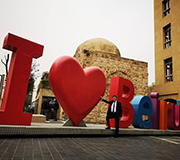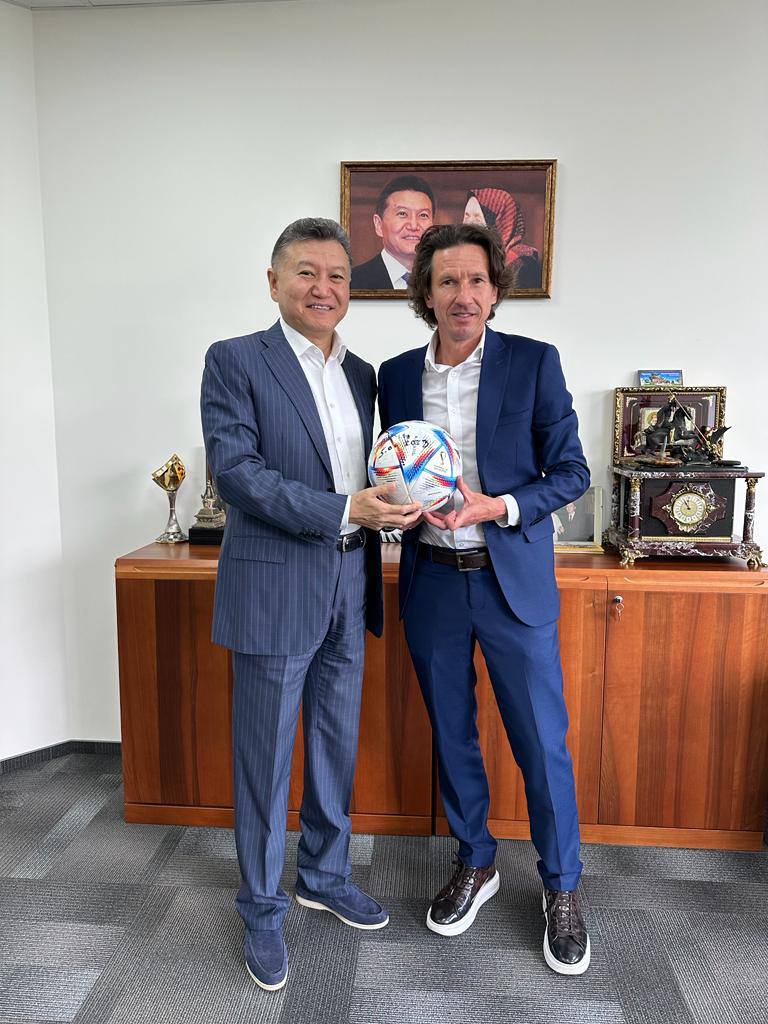- Gennady, what is remarkable about this statue and how it happened to be so far from the Volga shores?
- "Halmg Bogd" is an ancient silver statue of Lama Tsongkhapa, which is today stored in the main Mongolian monastery of Gandan Tse Chen Ling. People became interested in the history of this relic as soon as negotiations and preparation for its temporary transfer to Kalmykia were officially announced.
Little is known about the statue in today's Kalmykia. Too much time has passed and, after all, we have been through so much that it is no wonder that we have forgot about it. Nevertheless, I will gladly share what I know.
- I think, everyone is interested to find out who created the statue
- According to fragmentary information available to us, sculptors led by Oirat Zaya Pandita created the statue. It was made of 25 kg of pure silver collected among oirats in the year of Red Leopard. The sanctification of this statue was made by the fifth Dalai Lama and Oirat Zaya Pandita.
- Who was the initiator of its creation and what was the reason?
- The initiative, as the Mongolian historians write, came from the Turghud Ho-Orlyuk, Dera-Dalai Batyr of Derbeth, Hushut Khushi Khan and Kundelen-Ubashi. The statue was made in accordance with the prediction that it would save the country from the oncoming Manchurian threat. And so it happened. The Manchu were repulsed.
- How did it get to the Kalmyks?
- According to information provided by Mongol historians, this statue was personally presented by Zaya Pandita during his arrival to the Kalmyks in 1655. Since then, it has been one of the main shrines of the Kalmyk khans, a symbol of their affiliation with the Buddhist tradition of Zaya Pandita and Dalai Lama.
- What can you say about its Kalmyk period?
- According to the Mongol historians, Taisha Punzok (Monchak) gave an oath of allegiance to his people standing in front of the statue. We can assume that Ayuka and all the subsequent Kalmyk khans up to Ubashi did it as well. In the time of Ayuka Khan, this statue was in the Khan's monastery of Azhnai, near Shakur Lama.
- How did the statue leave Kalmykia?
- Together with Ubashi Khan and most of the Kalmyks, who flew to Jungaria on 5 January 1771. It was kept in Xinjiang until the monks moved the relic to Bulgan in Mongolia, fearing for its safety during one of the uprisings. In Mongolia, the legend is told of how monks put this statue on a white camel and moved it away from fighting. On the way, the camel constantly tried to step aside. Once robbers raided travellers, but they did not touch the camel and statue. The llamas realized that they simply had to follow the camel. A few days later, the camel led the people to the Mongolian border.
- Where was the relic kept in Mongolia?
- In Mongolia, it was stored at different times in different monasteries: Khuzhirtin ,Tsagaan and Dachin Gung. After World War II, when the Gandan Monastery was restored in the 1950s, this statue was brought there, and it was one of those shrines that preserved Mongolia's independence. This is described in detail in Larry Ilishkin's book.
- When did the Kalmyks request to bring it back to Kalmykia?
- Many years ago, President Kirsan Ilyumzhinov asked President N. Enkhbayar to bring this statue to Kalmykia. Later, the request was also made by Shajin-lama of Kalmykia Telo Tulku Rinpoche, but the Mongolian side was not ready at the time. And only in connection with the 600th anniversary of Lama Tsongkhapa’s departure to Nirvana, did the negotiations succeed.
- What are the benefits of worshiping this statue?
- First of all, it establishes a karmic connection with the Buddhist tradition of Oirats, with the great Oirat and Tibetan teachers and with the deities protecting the Oirat people. Also worshiping this statue at the time of the 600th anniversary of Tsongkhapa will give a special blessing to all the Buddhists who follow the Tsongkhapa tradition.
As a Mongolian keeper of the shrine told me in 2007, this statue emanates a glow on certain days. Mongolian monks say the glow is related to the people who participated in the consecration. These are the fifth Dalai Lama, our great Zaya Pandita, the Dzhungarian Achitu Tsorji, the Kalmyk Shakur Lama and hundreds of other great teachers.
In addition, it has to do with the relics associated with Buddha Shakyamuni, Attisha, Dromtonpa, Tsonkapa, Zaya Pandita, and other great Buddhist teachers of Tibet. Another important fact: the statue of Oirat and Kalmyk khans bestows khan's blessing on all who worship it.
 We have already reported that the statue of Lama Tsongkhapa, kept in Mongolia for two and a half centuries, is to be sent for temporary storage to Kalmykia. It is said that Lama Tsongkhapa statue, which is made of pure silver, emanates a glow sometimes.
We have already reported that the statue of Lama Tsongkhapa, kept in Mongolia for two and a half centuries, is to be sent for temporary storage to Kalmykia. It is said that Lama Tsongkhapa statue, which is made of pure silver, emanates a glow sometimes.






















